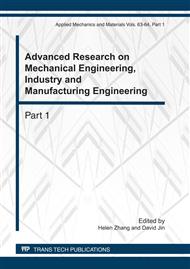p.453
p.457
p.461
p.465
p.470
p.474
p.478
p.482
p.486
Study on Improved Point Cloud Compression Algorithm with Features Reserved
Abstract:
We introduce an improved compressing algorithm with features reserved for point cloud. Divided-box method is employed for compressing algorithm to improve the neighbor field searching efficiency, with which normal vector and curvature of points are calculated, and feature points are reserved according to reducing rule, finally, based on the octree theory, the smallest grid is refined until which reaches the minimum requirements, then reserve the most representative point of the smallest grid, remove the other points, and data reduction is done. Experimental results show that the compression algorithm conserved the features of point cloud with high efficiency.
Info:
Periodical:
Pages:
470-473
Citation:
Online since:
June 2011
Authors:
Keywords:
Price:
Сopyright:
© 2011 Trans Tech Publications Ltd. All Rights Reserved
Share:
Citation:


